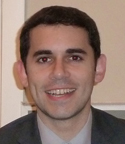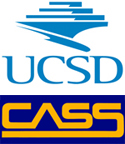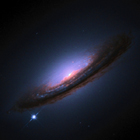Title:
Heart of a Star, Revealed
What Materials / techniques were used:
Public domain Hubble Space Telescope and Chandra X-Ray Observatory images of planetary nebulae and supernova remnants, foreground Milky Way stars from iconic image of Andromeda galaxy, digital editing.
Please briefly describe your work and how it relates to astronomy:
Near the end of their lives, stars can cast off their outer layers slowly, via a gentle stellar wind, resulting in stunning cosmic images of so-called "planetary nebulae", which were originally thought (incorrectly) to be newly forming planetary systems. Stars can also cast off their outer layers (or essentially all of their mass) quickly and violently, in supernova explosions, sometimes leaving behind magnificent "supernova remnants", which are equally as beautiful as planetary nebulae, sometimes eerily similar in form, although arising from very different physical phenomena. Each of these processes comes closer, with varying degrees, to revealing the heart of the star, its inner core where all the magic of nuclear fusion happens, powering the star over the course of its life while transmuting hydrogen and helium into heavier elements like carbon, oxygen, and iron; the rarer and (arguably) more interesting building blocks of the universe. When some of the heavy elements forged inside the heart of the star are ultimately released, in their own time, on a path to merge with the swirling gas and dust clouds of the wider galaxy, they become raw material to form new generations of stars, and eventually - after several generations of chemical enrichment - moons, asteroids, planets, and people (including astrophysicists). All the atoms in our bodies, including those that make up our own hearts, were once just potentialities, trapped for unimaginable aeons inside the heart of a star.
For this piece, I used iconic Hubble Space Telescope and Chandra X-Ray Observatory false color composite images of these amazing wonders of the natural world, often dubbed the jewels of the galaxy. Since these phenomena each signal the gradual or rapid peeling away of matter to reveal the physical hearts of stars - the central place in the cosmos to which all of us owe our existence - they seemed an ideal ingredient to create a patchwork mosaic of the symbol of our own hearts, framed with a backdrop of foreground stars from our own Milky Way galaxy. The submitted image was actually used as the centerpiece for the invitation to our wedding that I designed as an admittedly nerd-inspired tribute to my wife, the love of my life, Kristen Friedman. To be fair - lazy stargazing aside - the life of an astronomer is not alway romantic (especially when debugging code!), but we are extremely lucky to live in an age where we have the tools to see just a small part of how beautiful our world truly is, and to sometimes sit back and wonder how exactly we fit into this ridiculously beautiful universe.
-Andrew Friedman, MIT Postdoc (Jan 31, 2014)
















